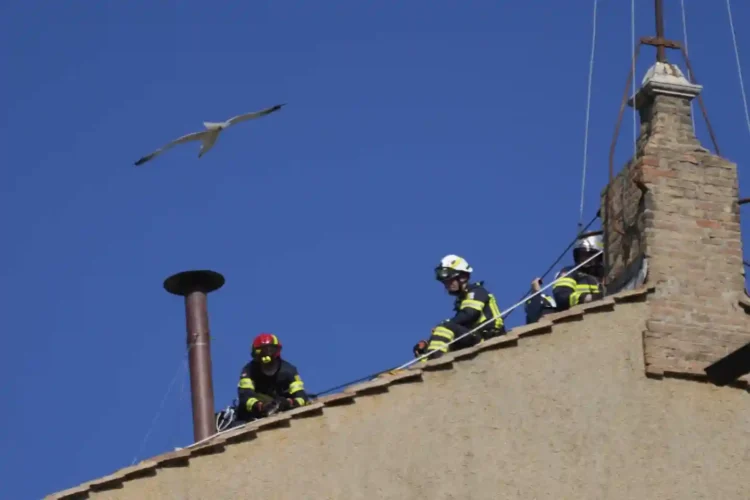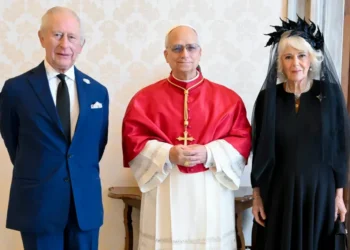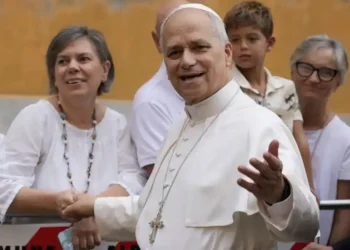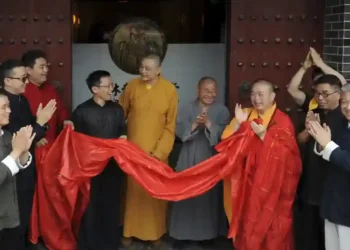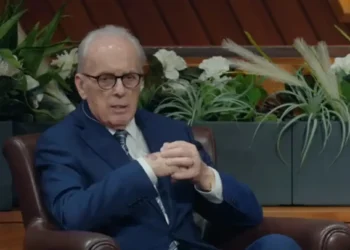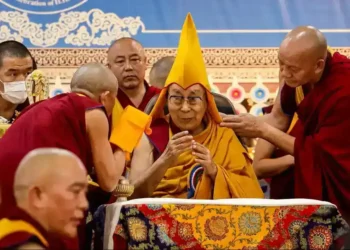Vatican Installs Iconic Chimney Ahead of Papal Conclave to Elect Pope Francis’ Successor
VATICAN CITY — As the Catholic Church prepares to choose a new leader, a familiar signal of tradition has returned to the Vatican skyline: the chimney atop the Sistine Chapel.
On Friday, Vatican firefighters installed the chimney that will once again deliver plumes of smoke to signal the election—or indecision—of a new pope. The installation marks a key step in the preparations for the highly anticipated May 7 conclave, where cardinals will vote in secrecy to elect a successor to Pope Francis, who passed away on April 21 at the age of 88.
During the conclave, cardinals cast their ballots in the Sistine Chapel. After every two rounds of voting, the ballots are burned to send a signal to the waiting world outside:
- Black smoke means no pope has been chosen.
- White smoke signals that a new pontiff has been elected.
The chemical recipes for these signals are carefully controlled: black smoke is produced by mixing the ballots with compounds like potassium perchlorate and sulfur, while white smoke comes from a different combination, including potassium chlorate and lactose.
This symbolic tradition captured global attention in 2013, when white smoke rose from the chimney on the fifth ballot, and Cardinal Jorge Mario Bergoglio was revealed as Pope Francis—the first Latin American pope in history.
While preparations continue above, intense discussions are taking place below. Cardinals from around the world—including those over age 80 who cannot vote—have gathered in Rome for a series of pre-conclave meetings, debating the direction of the Church and the qualities needed in its next spiritual leader.
Among the pressing topics:
- The Vatican’s troubled finances
- Diverging opinions on Pope Francis’ legacy
- The future role of women and laypeople in Church leadership
Francis was praised for prioritizing the poor and opening leadership roles to non-clergy, but his reforms also sparked controversy—especially among conservative members of the Church.
One point of contention has been Francis’ 2022 Vatican constitution, which restructured the Church’s governing bodies. For the first time, two laymen were appointed to lead key Vatican departments, and two nuns—Sister Simona Brambilla and Sister Raffaella Petrini—took charge of major offices, with Petrini now running the Vatican City State itself.
Ironically, the very firefighters who installed the Sistine Chapel chimney fall under Petrini’s authority—a symbol of how far Francis’ reforms reached.
Not everyone welcomed these changes. Cardinal Beniamino Stella, a retired Vatican official, reportedly criticized the shift away from clergy-dominated governance. According to America Magazine, Stella voiced concern that separating the priesthood from Church authority could weaken the institution’s structure.
Still, his influence may be limited. At 83, he will not vote in the conclave, and the younger generation of 135 cardinal electors may have different priorities.
Some, like Cardinal Fernando Filoni, are calling for unity above all else. “The pope has to ensure the unity of all of the Church,” said the 79-year-old, a veteran of the Vatican’s evangelization mission.
Others, such as Cardinal Fernando Chomali of Chile—appointed by Francis and deeply engaged in the Church’s response to clergy abuse scandals—see the diversity of views as a strength.
“Coming from a faraway country like Chile, hearing so many different perspectives is enriching,” Chomali said.
With the chimney now in place and tensions rising, all eyes turn to the Sistine Chapel once again. Soon, the world will be watching for a puff of white smoke—and the name of the next pope.
Source: AP News – Vatican firefighters install a chimney on the roof of the Sistine Chapel for the papal election
This article was rewritten by JournosNews.com based on verified reporting from trusted sources. The content has been independently reviewed, fact-checked, and edited for accuracy, tone, and global readability in accordance with Google News standards.
Stay informed with JournosNews.com — your trusted source for verified global reporting and in-depth analysis. Follow us on Google News and BlueSky for real-time updates.
JournosNews.com follows Google News content standards with original reporting, verified sources, and global accessibility. Articles are fact-checked and edited for accuracy and neutrality.
